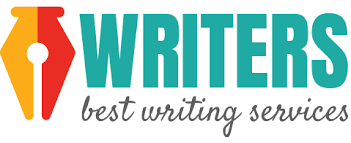Strategies for Reducing Medication Errors in Hospital
Medication errors are mistakes that happen when giving medicine to patients. These mistakes can happen at any stage, such as writing the prescription, giving the wrong dose, or giving the medicine to the wrong person. In hospitals, these errors can be very dangerous and may harm patients. That is why it is very important to find ways to reduce these mistakes and keep patients safe. Nurses, doctors, pharmacists, and all healthcare workers must work together to prevent them.
One of the most important strategies is improving communication. Clear communication between doctors, nurses, and pharmacists helps ensure that everyone understands what medicine is needed, in what amount, and when to give it. Misunderstandings or poor handwriting can lead to mistakes. Hospitals are now using electronic systems instead of handwritten notes to reduce confusion. These systems help everyone read the instructions clearly.
Using electronic prescribing, also known as e-prescribing, is another helpful tool. This is when doctors enter medicine orders into a computer instead of writing them by hand. These systems often have safety features that check for wrong doses or drug interactions. If something is not right, the system sends an alert so it can be fixed before reaching the patient.
Barcoding systems are also useful. In this system, a barcode is placed on the patient’s wristband and on the medicine. Before giving the medicine, the nurse scans both barcodes to make sure they match. This helps confirm that the right patient is getting the right medicine at the right time. It adds an extra layer of safety and can prevent many common errors.
Another key strategy is the “five rights” of medication administration. Nurses are taught to always check for the right patient, right drug, right dose, right route (such as by mouth or injection), and right time. Following these five rights every time helps reduce mistakes. Nurses are encouraged to double-check labels and ask questions if something does not seem right.
Training and education are also very important. Hospital staff should be trained regularly on how to give medicines safely. They need to understand how different drugs work, how to read labels, and what side effects to watch for. New staff, especially, should be guided closely in their first few months. Even experienced staff need updates, as new medicines and procedures are always being introduced.
Creating a culture of safety in the hospital is another strong strategy. This means encouraging staff to speak up if they notice something wrong. If a nurse sees that a patient is about to get the wrong medicine, they should feel free to say something without fear of being blamed. When everyone feels responsible and supported, they are more likely to act carefully and protect patients.
It is also important to limit distractions. Medication errors often happen when a nurse is interrupted during their work. To prevent this, some hospitals have special areas or quiet times when nurses give medicines without interruptions. They may also wear vests or signs that say, “Do Not Disturb,” while giving medicines. These simple actions can make a big difference.
Medication reconciliation is another helpful method. This means checking a patient’s full list of medicines when they come into the hospital, when they move to another area of the hospital, and when they go home. Many patients take more than one medicine, and some may be taking things that do not go well together. By carefully reviewing all medicines at each step, hospitals can prevent dangerous mix-ups.
Pharmacists also play a key role in reducing medication errors. They check prescriptions for mistakes and make sure doses are correct. In some hospitals, pharmacists work closely with doctors and nurses in patient care teams. Their expert knowledge helps reduce risks and improve safety.
In conclusion, reducing medication errors in hospitals takes teamwork, careful systems, and a strong focus on safety. Strategies like electronic prescribing, barcoding, clear communication, the five rights, ongoing training, and involving pharmacists all help protect patients. Hospitals that use these methods are better able to prevent harm and provide high-quality care. Every patient deserves to receive the right medicine in the right way, and with careful attention, hospitals can make that happen every day.
"You need a similar assignment done from scratch? Our qualified writers will help you with a guaranteed AI-free & plagiarism-free A+ quality paper, Confidentiality, Timely delivery & Livechat/phone Support.
Discount Code: CIPD30
WHATSAPP CHAT: +1 (781) 253-4162
Click ORDER NOW..


